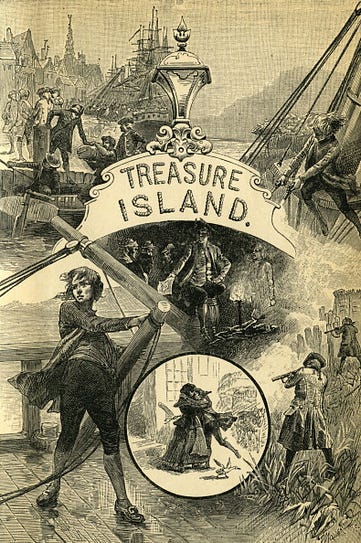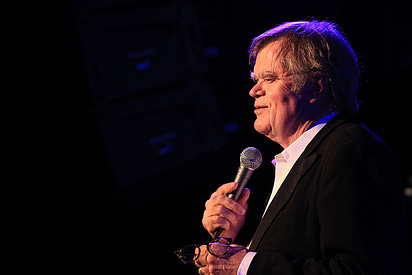|
 |
The Writer's Almanac from Monday, November 13, 2017
“Opposing Forces” by Eamon Grennan from Matter of Fact. © Graywolf Press, 2008.
ORIGINAL TEXT AND AUDIO - 2017
It was on this day in 1789 that Ben Franklin wrote this famous phrase: “In this world nothing can be said to be certain, except death and taxes.” The words were the second half of a sentence he’d written in a letter his friend Jean-Baptiste Leroy. It was shortly after the United States Constitution had been ratified, and his entire sentence was this: “Our new Constitution is now established, and has an appearance that promises permanency, but in this world nothing can be said to be certain, except death and taxes.”
It’s the birthday of poet Eamon Grennan (1941), born in Dublin. He once said: “I think poets are string theorists in some ways. They are trying to bring the macro and the micro constantly into a single focus.” His poetry has been referred to as “abundant, mouth-filling music.”
Grennan was educated at a Cistercian boarding school and moved to the United States in his early 20s. He taught Shakespeare, the Renaissance, and Irish literature at Vassar College for many years before publishing his first book of poetry, Wildly for Days, in his 40s. He’d taken a year off from teaching, without pay, and returned to Ireland with his wife and children, and spent the year writing poetry.
About publishing in midlife, he said: “Some do it ‘too easily,’ some not. People are talented when they are young, and they put a book together and they have a vividness and voice. I didn’t. Maybe I don’t still. It wasn’t a deliberate act of caution or calculation by any means. I worked from 1977 and I wrote poems […] gradually the balance between writing poems and writing criticism shifted and the poetry became more central.”
Eamon Grennan’s books include Wildly for Days (1983); Relations: New and Selected Poems (1998); Still Life with Waterfall (2002); and There Now (2016).
It’s the birthday of Saint Augustine, born in Tagaste, Numidia, a part of North Africa that is now Algeria (354). He converted to Christianity as an adult and wanted nothing more than to settle down to a quiet life of thinking about theology and writing books. But when he moved to the port town of Hippo to set up a monastery, he was forced to take over the duties of the local bishop, and he regretted for the rest of his life that he had to spend so much of his time delivering sermons and running a parish, when he could have devoted all that time to writing.
He still managed to write more than 90 books in his lifetime, but he wasn’t taken very seriously by other theologians. He couldn’t read or write in Greek, which was the language of intellectuals, and he lived in a backwater part of the Roman Empire. But by living on the edge of the empire, he was intimately familiar with all the pagan influences that were threatening Christianity, and he devoted himself to debunking all the popular new-age religions. His most famous book The Confessions (c. 400) is in part the story of how he converted to Christianity after living for years as a pagan himself.
In the last years of his life, Augustine was witnessing the fall of the Roman Empire. His city of Hippo was besieged by vandals, and it was destroyed soon after his death. But somehow Augustine’s library survived, and all his ideas about resisting pagan influences became doctrine within the church. It’s partially due to his writings that the Catholic Church survived the medieval period and did not break up into separate churches for another 1,000 years.
It’s the birthday of Robert Louis Stevenson, born in Edinburgh, Scotland (1850). He was a sickly, moderately successful essayist and travel writer, living in France, when one evening he walked to a friend’s house, looked in through the window, and fell instantly in love with a woman sitting there at the table. To make a grand entrance, he opened the window, leapt inside, and took a bow. The woman was Fanny Osbourne and she was both American and unhappily married. She had come to Europe to get away from her husband, but after spending months getting to know Stevenson, she decided to go back to California.
Stevenson got a telegram from her a few weeks after she’d returned to the United States, and he decided on the spot to drop everything and go persuade her to divorce her husband and marry him. His health, as always, was terrible, and the trip to the United States almost killed him. He collapsed on Fanny Osbourne’s doorstep, but she nursed him back to health. She did divorce her husband, and they got married in San Francisco and spent their honeymoon in a cabin near an abandoned silver mine.
They moved back to Scotland with her son from her previous marriage, and one rainy afternoon the following summer, Stevenson painted a map of an imaginary island to entertain his new stepson. The map gave him and idea for a story, and in a single month he had written his first great novel, Treasure Island (1883), about the young Jim Hawkins, who finds a treasure map and goes along on a journey to find the treasure, meeting pirates, surviving a mutiny, and getting to know a one-legged cook named Long John Silver. It has been in print now for 134 years.
Around the same time that Treasure Island was published, Stevenson woke up one morning and told his family that he did not want to be disturbed until he had finished writing a story that had come to him in a dream. It took him three days to write it, but when he read the story aloud to his wife, she said it was too sensationalistic. So he sat down and rewrote the whole thing. By the end of the week, he was fairly happy with the result, which he called Dr. Jekyll and Mr. Hyde (1885), about a scientist who invents a chemical that changes his personality from a mild-mannered gentleman to a savage criminal.
Those two books made Stevenson rich and famous. He spent the rest of his life traveling from one place to the next, producing about 400 pages of published work a year. He finally settled on the island of Samoa, where his health improved greatly, and in the last five years of his life he wrote 10 more books. He died at the age of 44, not from his respiratory illness, but from a stroke. His contemporaries saw him as one of the greatest writers of his generation, but he’s now remembered mainly as a writer of adventure stories. Critics wish he had finished the last novel he had been working on, about colonial life in Samoa, because the fragments that survive are among his best work.
Robert Louis Stevenson, who said, “There are no foreign lands. It is the traveler only who is foreign.” And, “Our business in life is not to succeed, but to continue to fail in good spirits.”
Be well, do good work, and keep in touch.®
CLICK HERE to see a schedule of Garrison Keillor’s events, including the 50th Anniversary tour of A Prairie Home Companion!
If you are a paid subscriber to The Writer's Almanac with Garrison Keillor, thank you! Your financial support is used to maintain these newsletters, websites, and archive. If you’re not yet a paid subscriber and would like to become one, support can be made through our garrisonkeillor.com store, by check to Prairie Home Productions, P.O. Box 2090, Minneapolis, MN 55402, or by clicking the SUBSCRIBE button. This financial support is not tax deductible.


